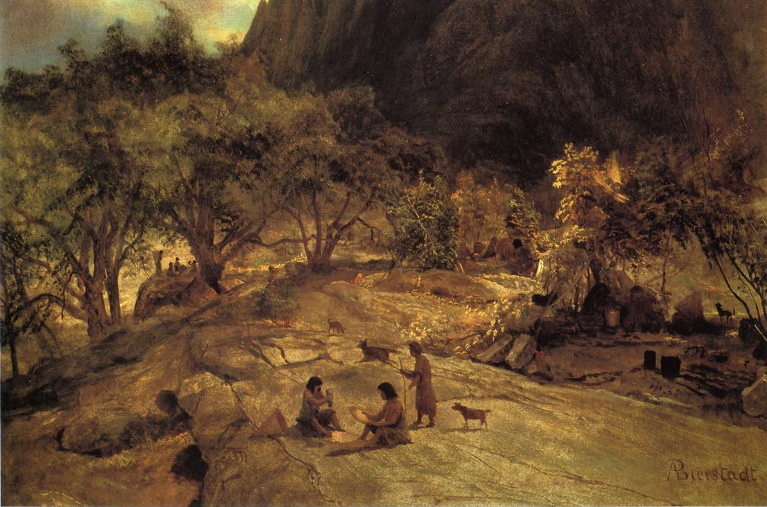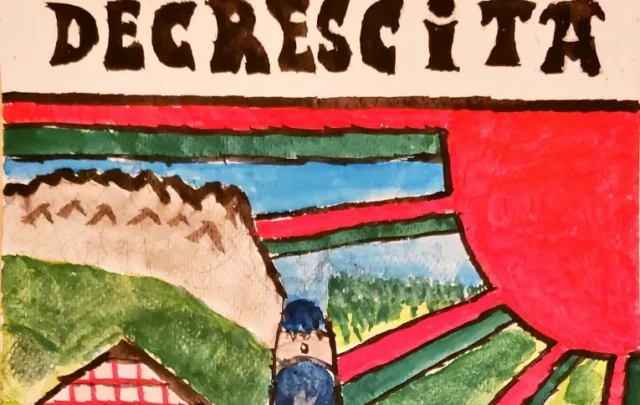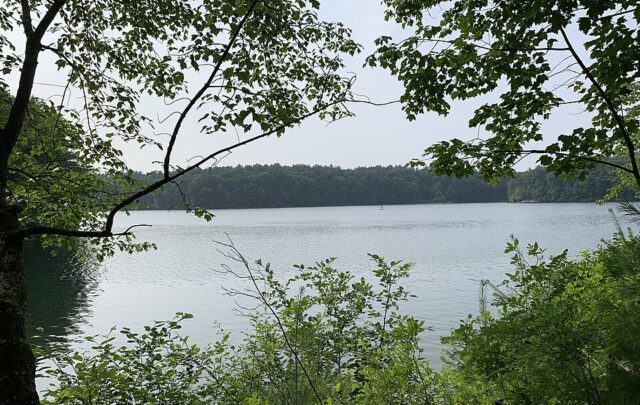In a May 2021 article in The Atlantic magazine entitled “Return the National Parks to the Tribes,” Native American author and activist David Treuer details the genocidal violence through which Native American tribes were expelled from some of the US’s earliest and most famous national parks.1 He begins with the story of the Mariposa Battalion, a white militia composed largely of miners who came upon the Yosemite Valley in 1851 during an expedition to hunt and kill members of California’s Miwok tribes. The militia set fire to Miwok wigwams and shot people as they fled, ultimately driving the tribes from Yosemite. Thirty-nine years later, Yosemite became the first national park, the crown jewel in what would become a continent-spanning archipelago of parks. Purged of Native Americans, the parks could be celebrated by John Muir and other conservationists as Edenic “wild gardens” in an influential paradigm of conservation that resonates around the world to this day. Viewed from the perspective of history, Treuer notes laceratingly, America’s national parks are a crime scene.
How should the nation atone for this violence against Native Americans? And how can the US National Park system cope with crippling challenges of overcrowding, habitat loss, and lack of adequate scientific research? Treuer provides a solution: return the parks to those who once inhabited and sustainably stewarded them—Native Americans. It’s a simple demand: give the stolen land back.
For a reader unfamiliar with Native American political movements, Treuer’s suggestion may come across as quite radical, linked to the kind of forceful challenges to settler colonial commonsense articulated in recent years.2 Yet however one might feel about such broader decolonial demands, it is important to note that Treuer’s suggestion echoes the demands of a broader global movement for indigenous rights.
As Bram Büscher and Robert Fletcher argue in their essay, the conservation movement has not exactly been respectful of indigenous land rights, either historically or in the present. Roughly 17 percent of the Earth’s land is sequestered in “protected areas,” which—like Yosemite—are constitutively established to exclude human beings. And powerful conservation organizations such as the International Union for the Conservation of Nature (IUCN), the World Wildlife Fund, and the Wildlife Conservation Society, headquartered in core capitalist nations, are lobbying for a doubling of these protected areas over the current decade. As frontline indigenous activists and allied groups such as Survival International have underlined, this project is in effect a massive land grab, a dispossession that can only be called colonial.
Although I find very little with which to disagree in Büscher and Fletcher’s essay, the one issue that I think they could emphasize more forcefully is the violent character of dominant conservation practices. In a telling moment in their essay, Büscher and Fletcher trace the origins of “fortress conservation” to the model that arose in North America in the late 1800s and early 1900s, which, according to them, “sought to protect natural areas from the impacts of rapid industrialization, while allowing such industrialization to continue elsewhere.” This account is accurate, as far as it goes, but it glides over the genocidal violence that constituted “natural areas” as available conservation space in the first place. As Treuer’s account of the founding of Yosemite makes clear, one cannot talk about conservation in the US without also talking about settler colonialism. Mainstream conservation, in other words, is a mode of dispossession. Büscher and Fletcher would likely agree with me on this point, but it’s important not to soft-pedal the argument, for historical accounts have strong contemporary implications.
In addition, by situating the origins of conservation in North America, Büscher and Fletcher elide the explicitly imperialist roots of conservation. Conservation as a discourse and practice began in the British colonies, when the hyper-exploitation of the natural world that characterized the plantation economies of the Caribbean islands and of India’s tropical forests by the British Navy’s insatiable hunger for lumber led to an alarmed recognition of unsustainability on the part of imperial functionaries.3 Wholesale forest clearance was visibly changing local climates in these places, as well as destroying valuable “natural resources,” and the answer was scientific management of the forests to ensure that they would continue to yield resources seen as valuable by the colonial power.
The first and most paradigmatic model for global conservation, according to historians, was the Indian Forest Act of 1865. With this law, the British Raj claimed the right to declare any land in India covered with trees the property of the colonial government. In one fell swoop, the customary rights of millions of Indian people to the forests that they had managed sustainably for centuries were revoked. The Imperial Forest Department was empowered to penalize and even imprison anyone caught collecting wood, foraging for game, or engaging in any of the other myriad customary uses to which Indian people had put the country’s forests for millennia.
The dispossession of the forest commons in the name of conservation continues today. A report released by Survival International on International Women’s Day documents how Adivasi (indigenous) women in India are being brutally persecuted for defending their lands against a massive corporate and government mining rush.4 Draconian anti-terrorism laws are used to silence Adivasi women land defenders, who are fighting to protect their land from mining projects slated to increase India’s coal production to one billion tons per year. Similar forms of violent dispossession, in which campaigns of assassination against activists are common, are unfolding around the globe today.5 All too often, the “protected areas” designated by big conservation organizations include concessionary zones for precisely such socially and environmentally destructive extractive industries.6
Around the world, indigenous people and their claims to land rights are the major forces that stand in the way of corporations and governments caught up in this extractivist frenzy. Proposed expansions of exclusionary, fortress conservation zones would dispossess hundreds of millions of people. In 2020, the Rights and Resources Initiative (RRI) released a study showing that more than 300 million people live in unprotected “key biodiversity areas” that cover 9 percent of the planet.7 The UN recognizes that indigenous people protect 80 percent of the world’s remaining biodiversity, often on land over which they have customary title—a form of ownership that states in both core capitalist and postcolonial nations are all too happy to ignore. Scientific studies have shown that indigenous practices provide the same or better levels of ecosystem support and protection as “protected areas.”8
The transformation of these areas into exclusionary fortress-style conservation reserves would undo decades of struggle and substantial victories by indigenous people. Powerful mobilizations among indigenous and traditional peoples in the 1970s and 1980s challenged the exclusionary foundations of conservation. These political movements asserted the primacy of their customary rights to land over the dispossession carried out by states. In turn, some countries initiated reforms to recognize these rights legally.9 For example, Brazil’s post-authoritarian constitution of 1988 recognized the rights of indigenous peoples to their traditional lands, recognition which opened the way for formal titling of large areas of the Brazilian Amazon to customary rights-holders. On an international level, political campaigns led to the recognition of customary rights of indigenous peoples to lands, territories, and resources, as well as to the restitution of lands taken from them without prior, informed consent. The struggle for the recognition of these rights featured prominently in the negotiations that led to the 2007 United Nations Declaration on the Rights of Indigenous Peoples (UNDRIP).10
This political pressure led conservation organizations to recognize the importance of what was referred to as “community-based natural resource management” (CBNRM) by indigenous peoples and other local communities. The outcome of this shift included community-based wildlife management programs such as Zimbabwe’s CAMPFIRE program, community forestry programs in countries like Mexico and Nepal, and locally managed marine areas in the South Pacific. Prominent conservation organizations recognized the rights of indigenous peoples in documents such as the Durban Action Plan, an outcome of the 2003 IUCN World Parks Conference, which called for indigenous representation in Protected Area management and restitution of land taken from indigenous people without their free and informed consent to establish protected areas. In 2010, the CBD adopted the Aichi Targets on Biodiversity, which described both protected areas and “other effective area-based conservation measures” (OECMs) as ways to safeguard ecosystems, with the latter category potentially including indigenous and community-managed lands.
Nonetheless, most reforms of protected-area legislation since the World Parks Congress in 2003 are focused on enabling co-management of reserves or on making provisions for communities that already own land to include their territory in national protected-area systems. There is not a single country where protected-area laws recognize community land ownership.11
The idea that mainstream conservation—which should be seen clearly as a form of colonialism—will reverse the sixth extinction is an illusion, one carefully cultivated by the corporations and governments that happily bankroll the big conservation NGOs. In the face of mounting environmental and social calamities, the only coherent stance must be to join indigenous and local communities around the world in demanding the return of stolen land, respect for their sovereignty, and a radical transformation of the CO2lonialism that characterizes the unsustainable behavior and policies of the wealthy.
1. David Treuer, “Return the National Parks to the Tribes: The Jewels of America’s Landscape Should Belong to America’s Original Peoples,” The Atlantic (May 2021), https://www.theatlantic.com/magazine/archive/2021/05/return-the-national-parks-to-the-tribes/618395/.
2. Eve Tuck and Wayne Yang, “Decolonization Is Not a Metaphor,” Decolonization: Indigeneity, Education, and Society 1, no. 1 (2012), 26.
3. Ramachandra Guha and Madhav Gadgil, This Fissured Land: An Ecological History of India (New York: Oxford University Press, 1993); Richard Grove, Green Imperialism: Colonial Expansion, Tropical Island Edens, and the Origins of Environmentalism, 1600-1860 (New York: Cambridge University Press, 1996).
4. Survival International, “New Report Exposes Brutal Persecution of Adivasi Women Defending Their Land,” March 8, 2022, https://www.survivalinternational.org/news/12735.
5. London Mining Network, “Mining Multinationals: Assassinations, Toxic Waste, and Lost Livelihoods,” March 29, 2022, https://londonminingnetwork.org/cat/monthly-bulletin/.
6. For one such example, see Simon Counsell, “Anatomy of a ‘Nature-Based Solution’: Total Oil, 40,000 Hectares of Disappearing Savannah, Emmanuel Macron, Norwegian and French ‘Aid’ to an Election-Rigging Dictator, Trees to Burn, Secret Contracts, and Dumbstruck Conservationists,” REDD Monitor, April 16, 2021, https://redd-monitor.org/2021/04/16/anatomy-of-a-nature-based-solution-total-oil-40000-hectares-of-disappearing-african-savannah-emmanuel-macron-norwegian-and-french-aid-to-an-election-rigging-dictator-trees/.
7. Thomas Worsdell et al., Rights-Based Conservation: The Path to Preserving Earth’s Biological and Cultural Diversity? (Washington, DC: Rights and Resources Initiative, 2020), https://rightsandresources.org/wp-content/uploads/2020/11/Final_Rights_Conservation_RRI_05-01-2021.pdf.
8. Richard Schuster et al., “Vertebrate Biodiversity on Indigenous-Managed Lands in Australia, Brazil, and Canada Equals That in Protected Areas,” Environmental Science and Policy 101 (2019), 1–6.
9. Jenny Springer et al., Protected Areas and the Land Rights of Indigenous Peoples and Local Communities: Current Issues and Future Agenda (Washington, DC: Rights and Resources Initiative, 2015), https://rightsandresources.org/wp-content/uploads/RRIReport_Protected-Areas-and-Land-Rights_web.pdf.
10. Ibid., 3.
11. Ibid., 15, 18.
Teaser photo credit: Painting of Sierra Miwok at the Mariposa Indian Encampment, Yosemite Valley by Albert Bierstadt. By Albert Bierstadt – forum.netfotograf.com, Public Domain, https://commons.wikimedia.org/w/index.php?curid=3379313





